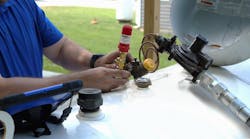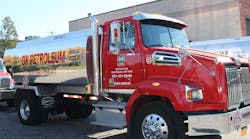The Department of Transportation (DOT) has announced funding of $287 million for improving safety on rural roads that includes plans for commercial vehicles.
This year’s guidance will focus on large truck fatalities occurring in work zones. Preliminary data shows that large-truck, work-zone fatalities account for nearly five percent of the approximately 5,000 large truck deaths each year. States will be requested to identify rural road crash and fatality problems and use grant funding to focus safety efforts in those areas.
In addition, the Federal Motor Carrier Safety Administration (FMCSA) is beginning a project with the American Association of Motor Vehicle Administrators (AAMVA) to convene a working group to research and analyze existing training opportunities and identify effective methodologies for delivering training on commercial vehicle safety strategies to local law enforcement agencies.
The safety improvement program also includes hazardous materials emergency preparedness grants that will be administered by the Pipeline Hazardous Materials and Safety Administration (PHMSA) to help rural communities respond to hazardous material emergencies. The $28 million grant program will:
•Help re-establish local emergency planning committees (LEPC) in rural communities to increase the number of rural trained volunteer emergency responders. Re-activated LEPCs will be eligible to receive grants for training and planning activities and help increase the number of volunteers trained in operations-level hazardous materials response.
•Identify rural hazmat challenges. PHMSA, working in partnership with the US Fire Administration (USFA), and emergency response organizations will help volunteer emergency responders plan and train for hazardous materials transportation incidents.
•Develop curriculum and technical assistance programs to work with other federal agencies, including the Environmental Protection Agency, Department of Energy, Federal Emergency Management Administration, and the USFA/Department of Homeland Security National Fire Academy.








